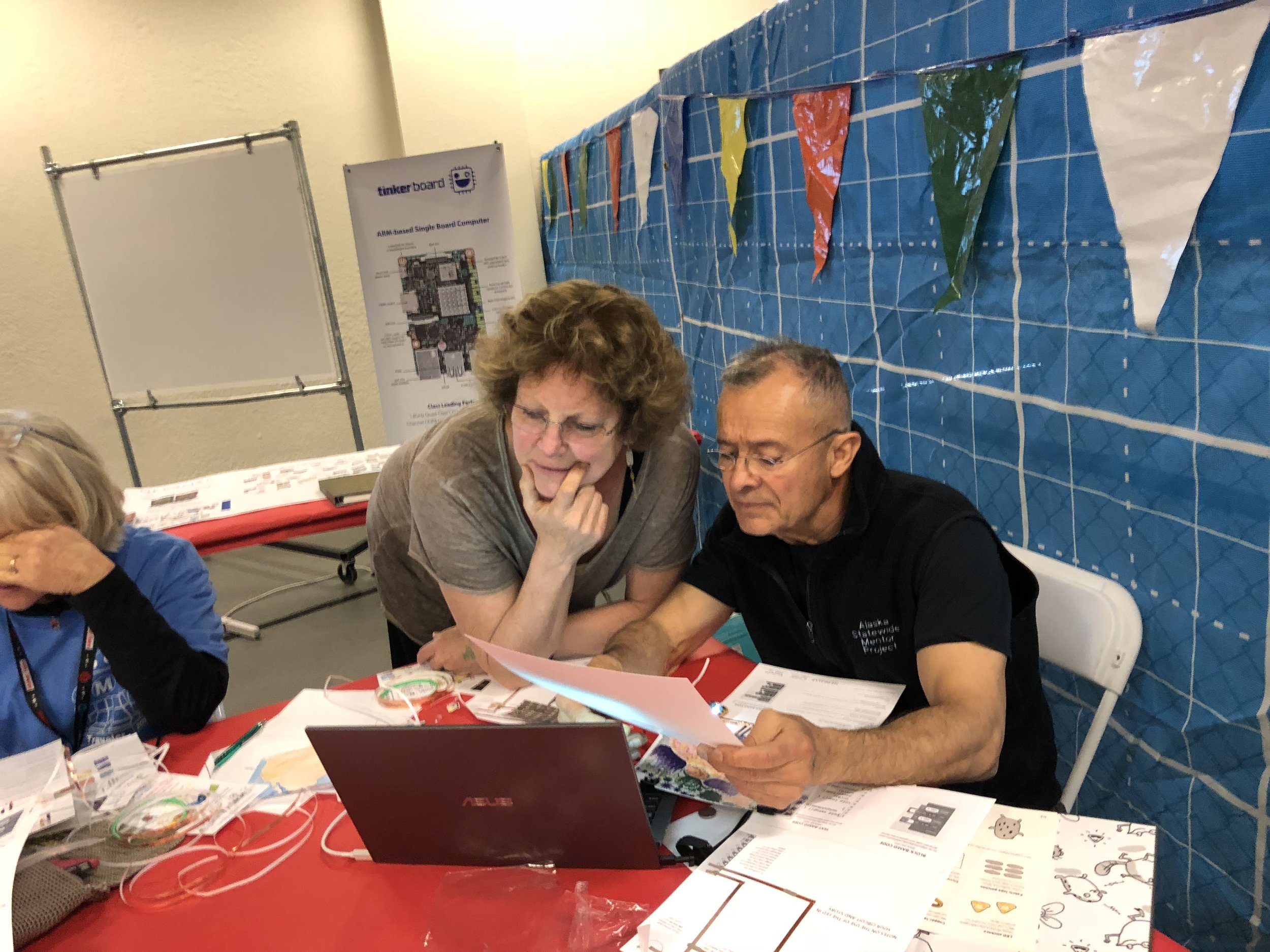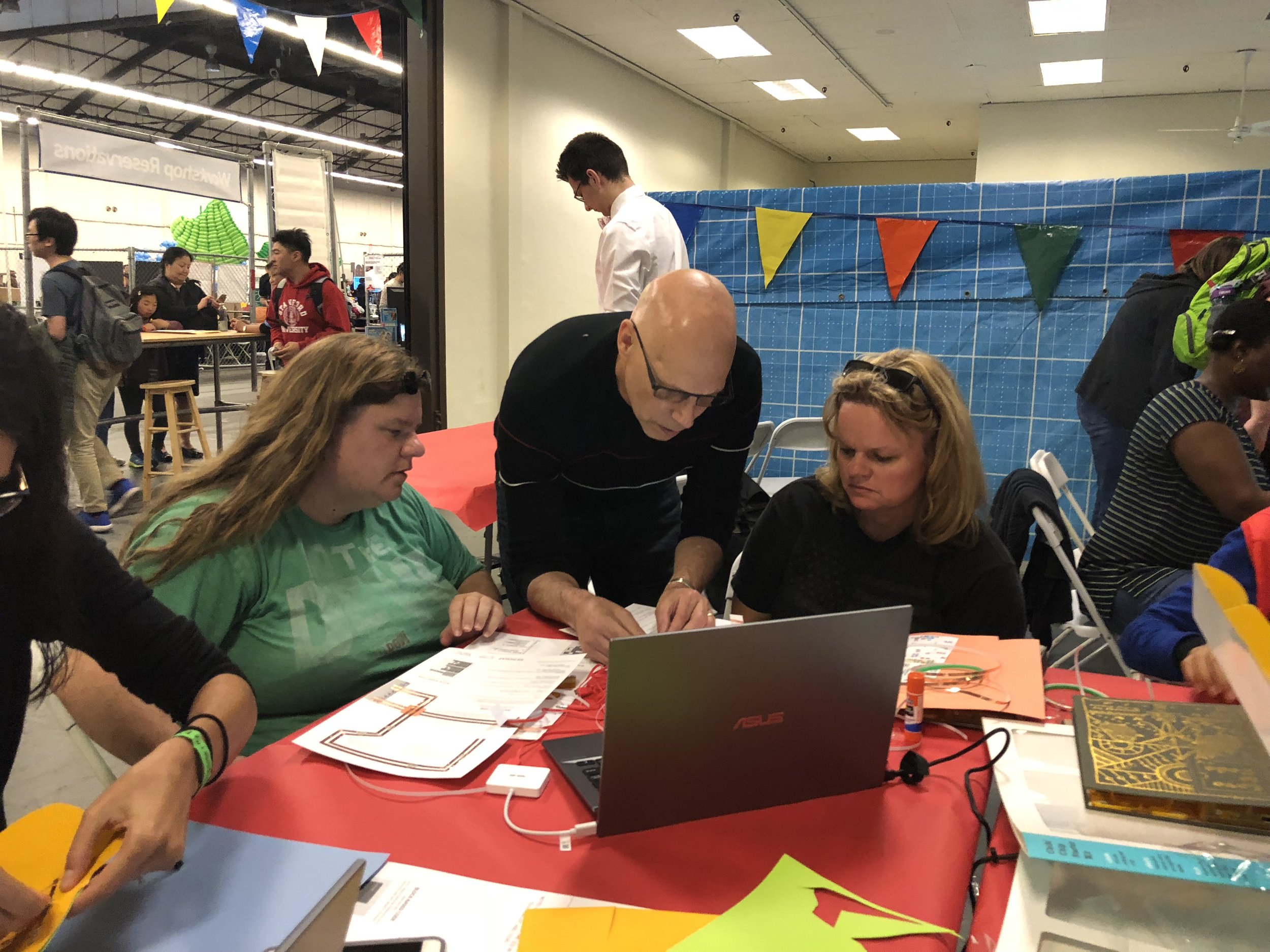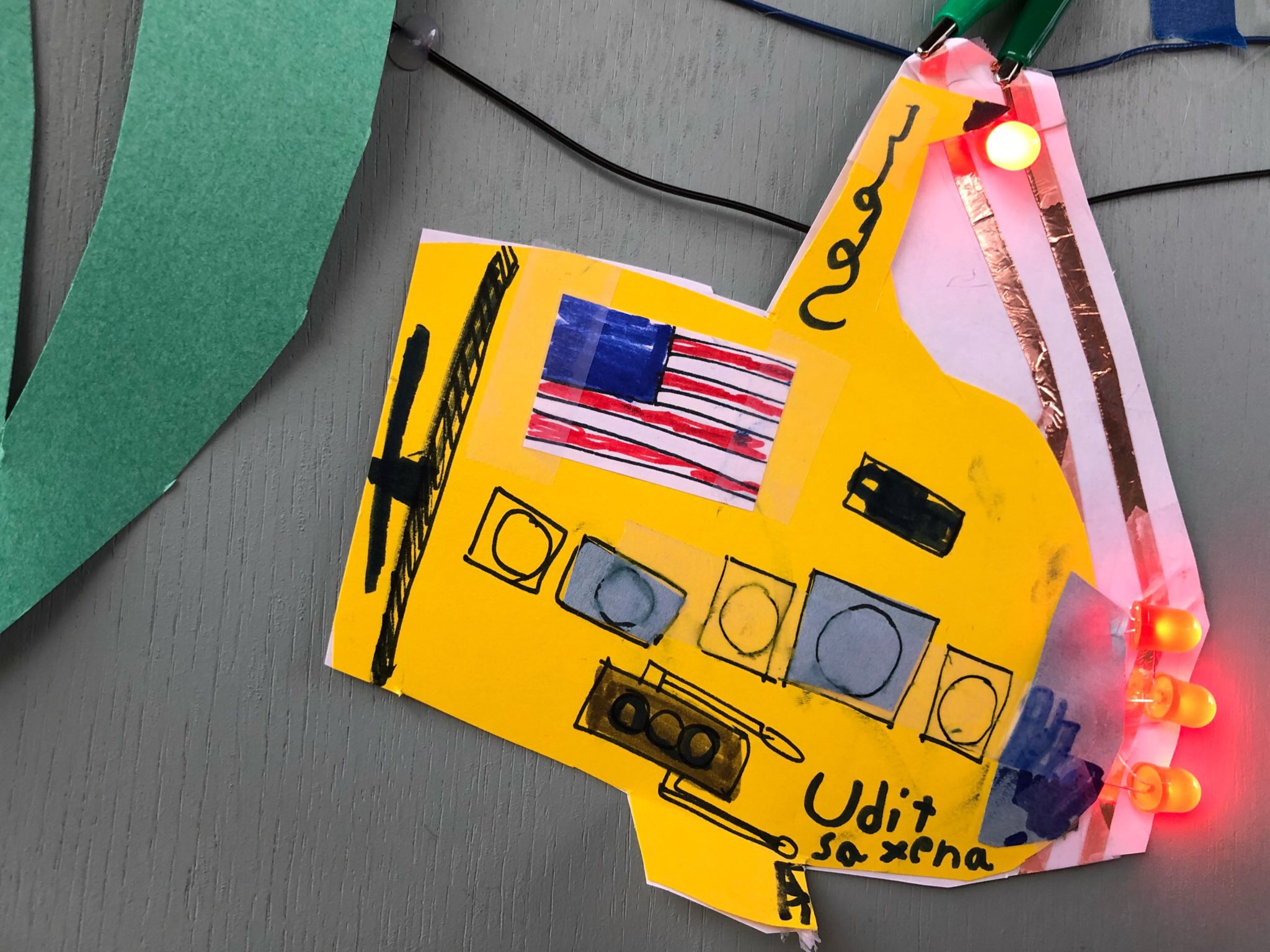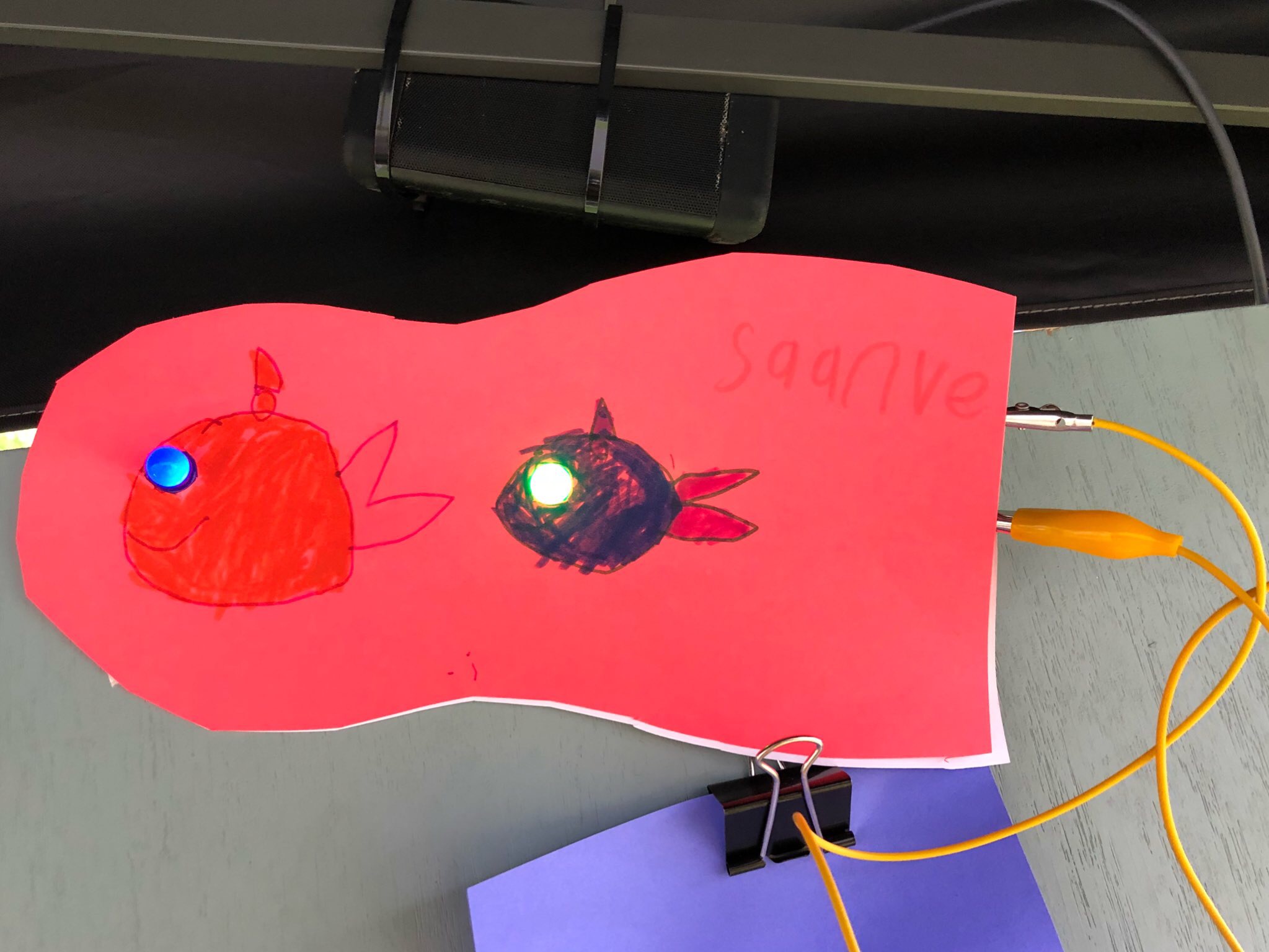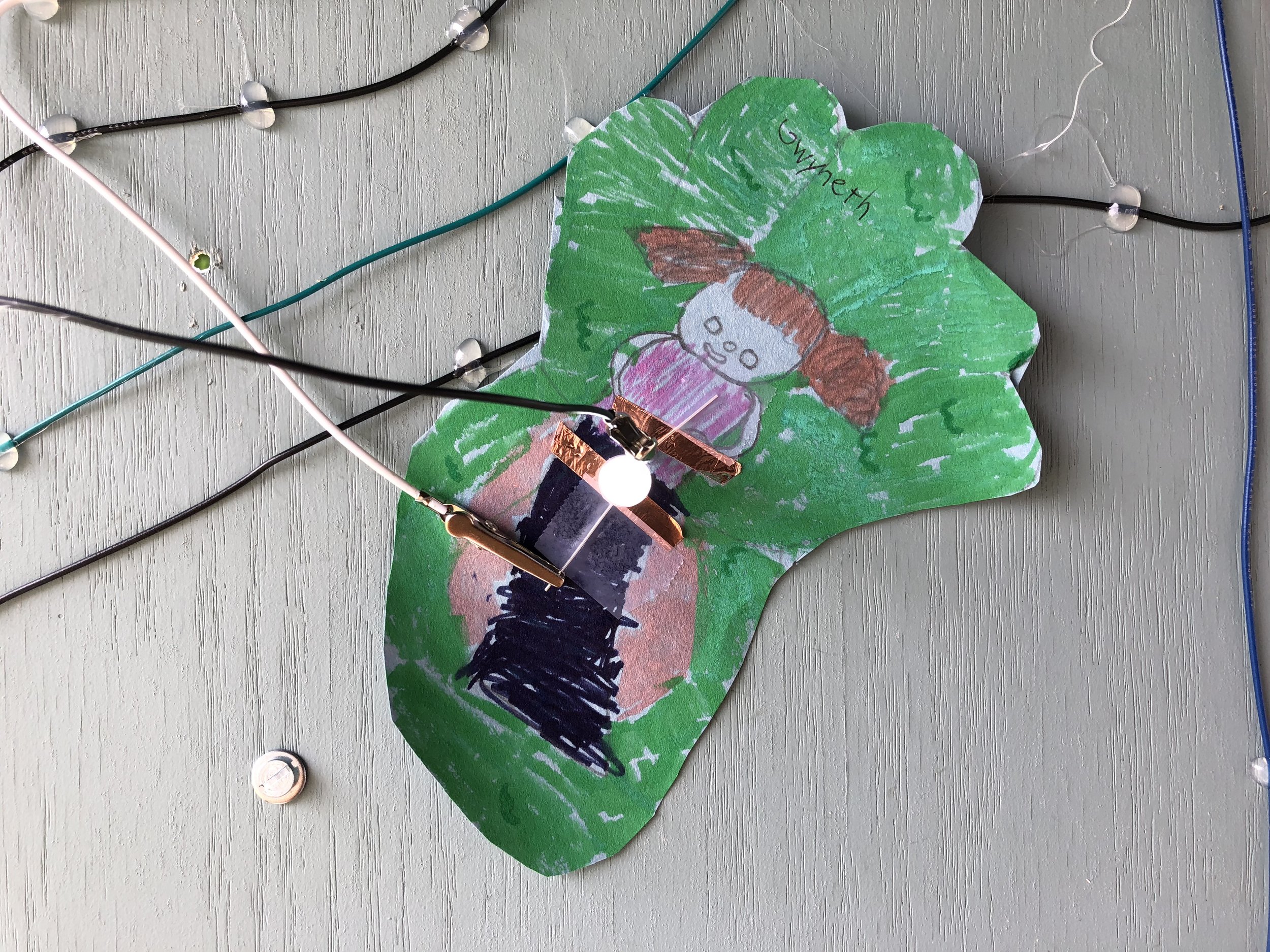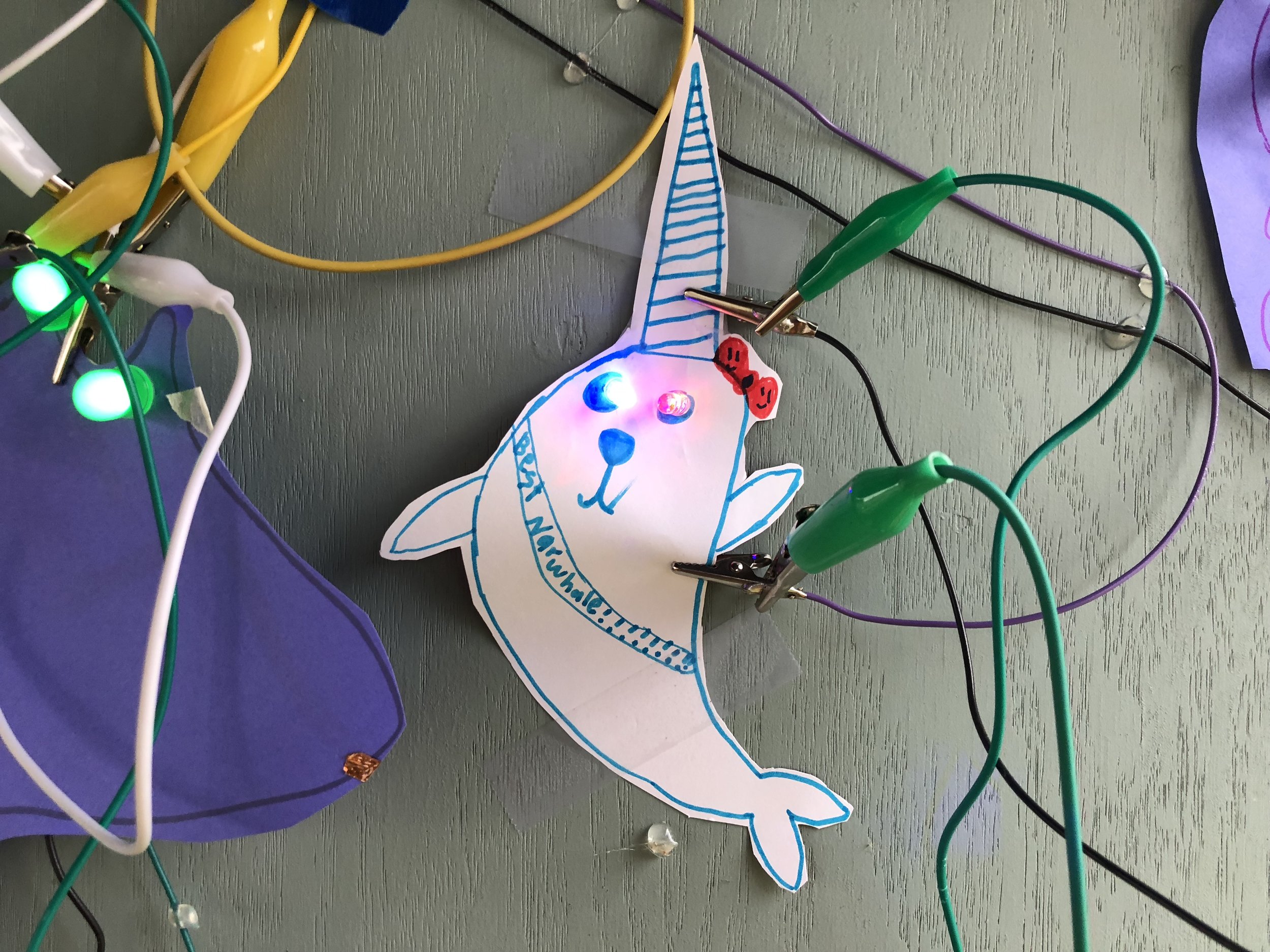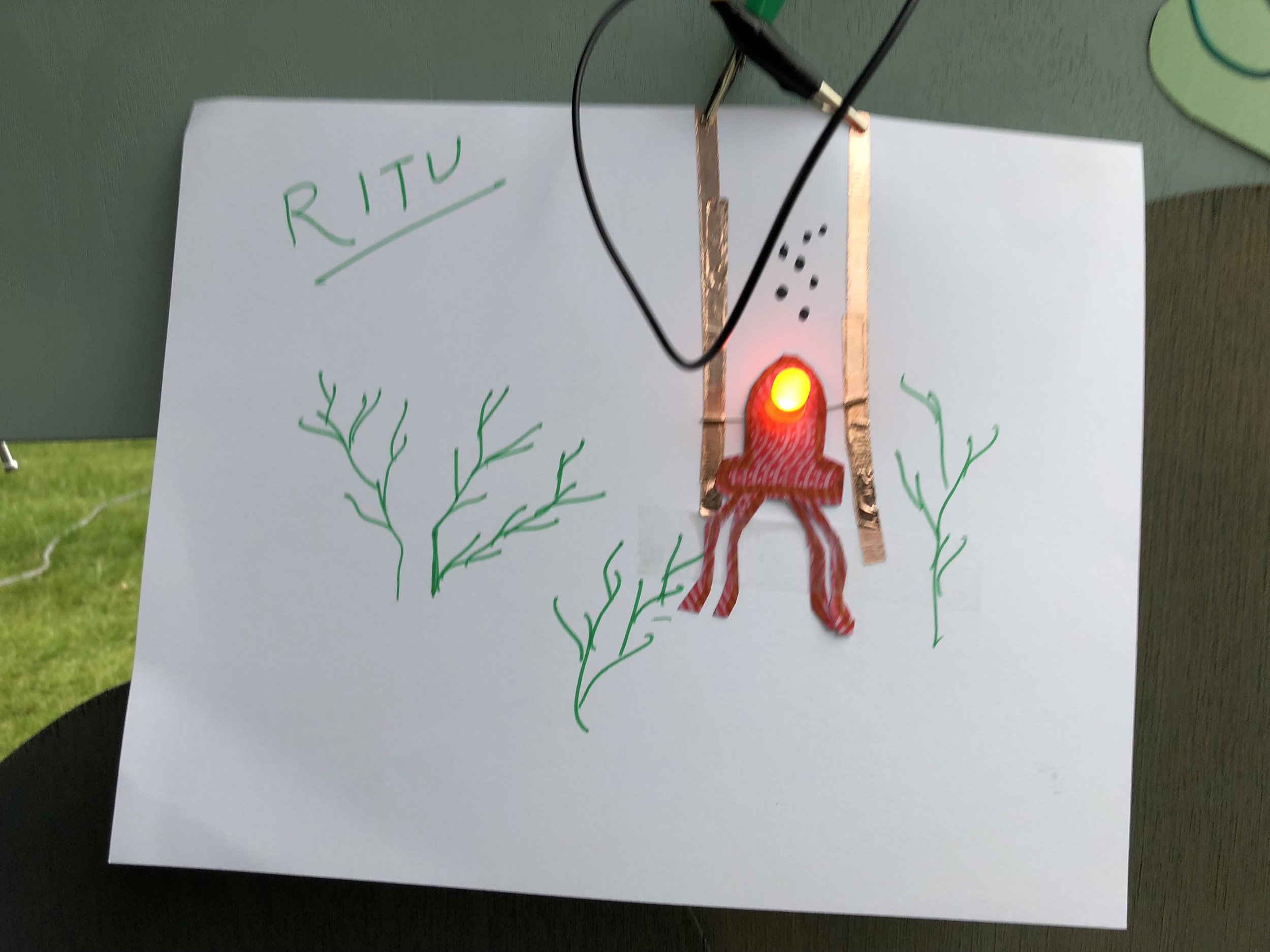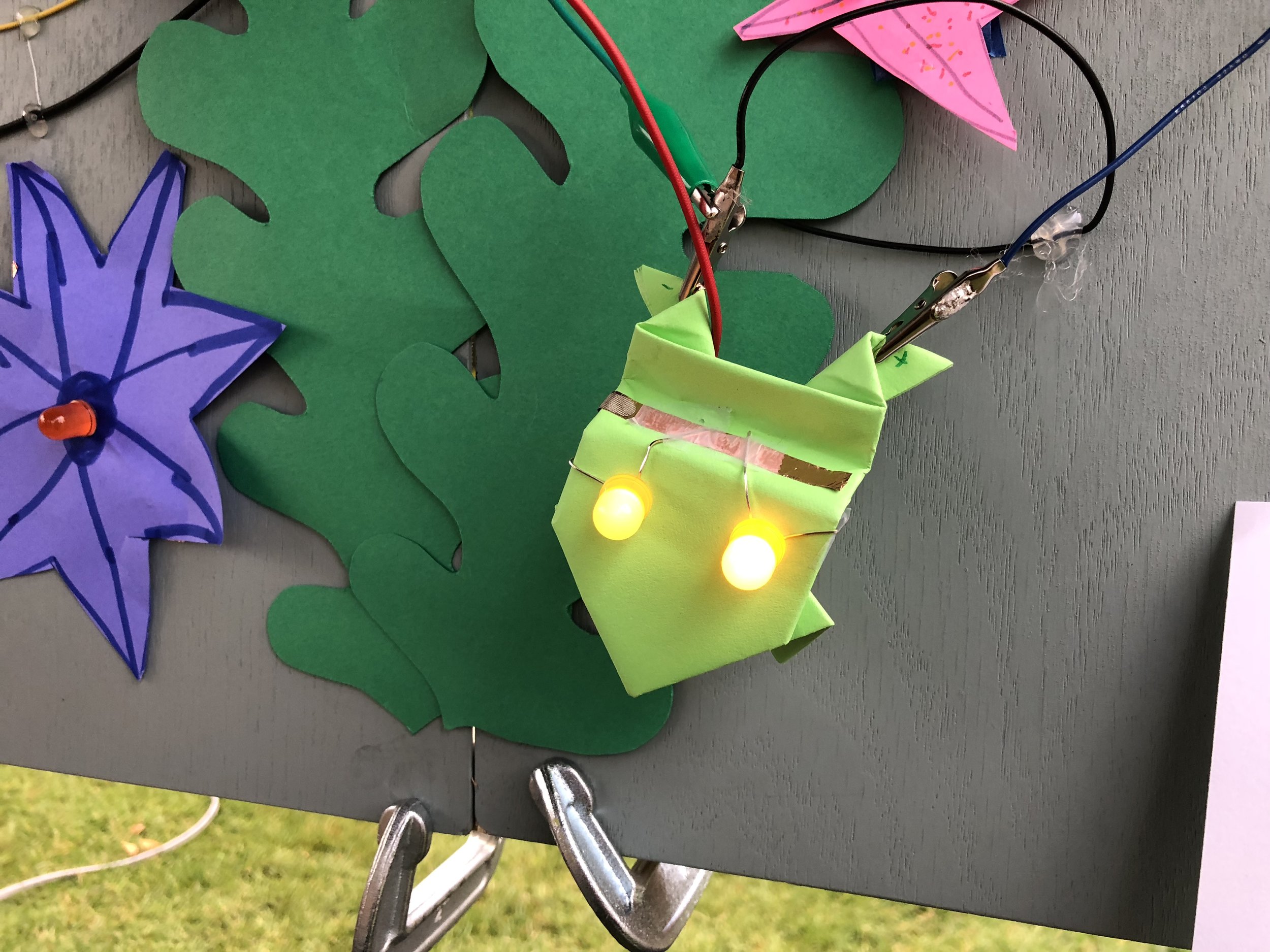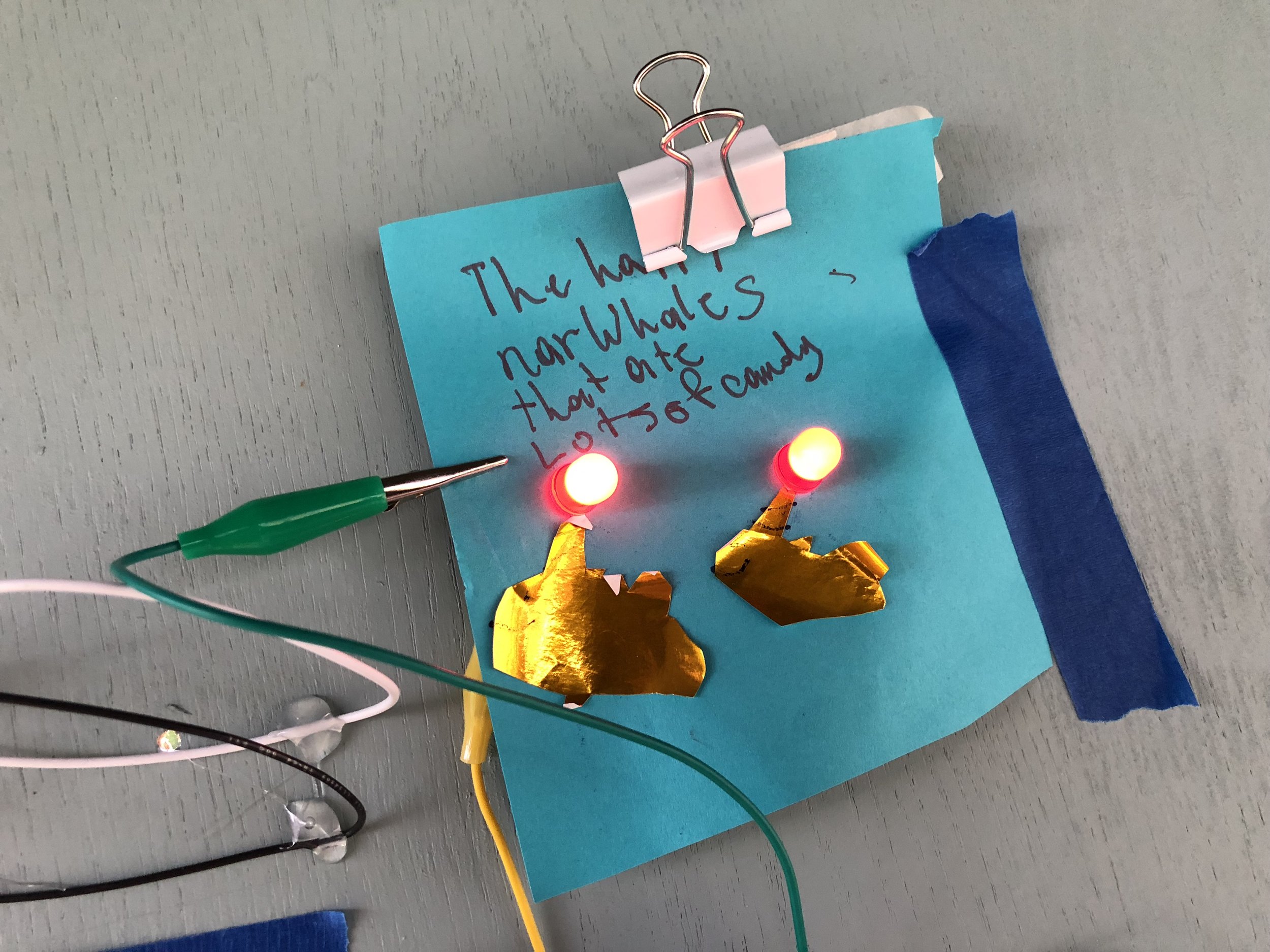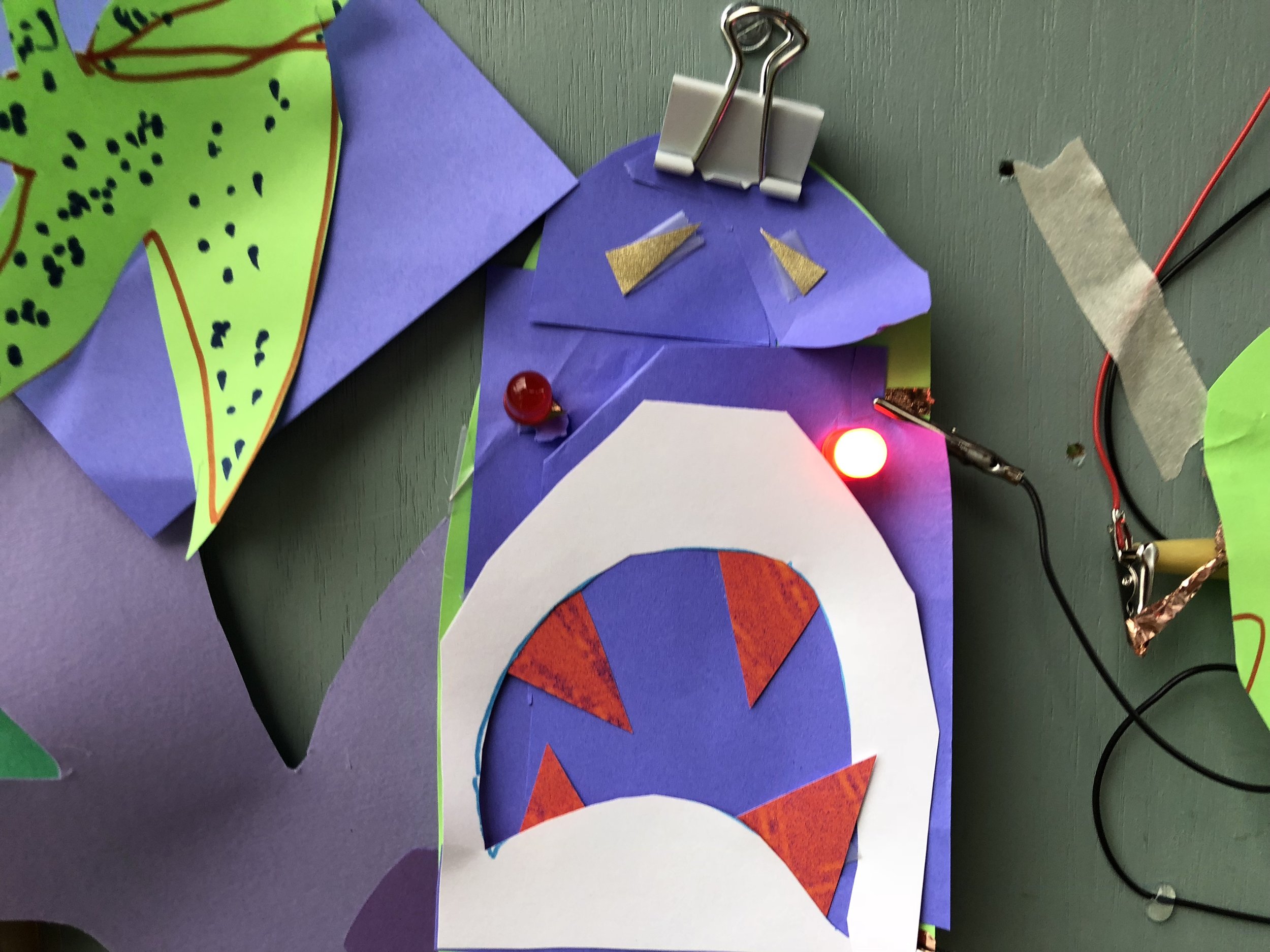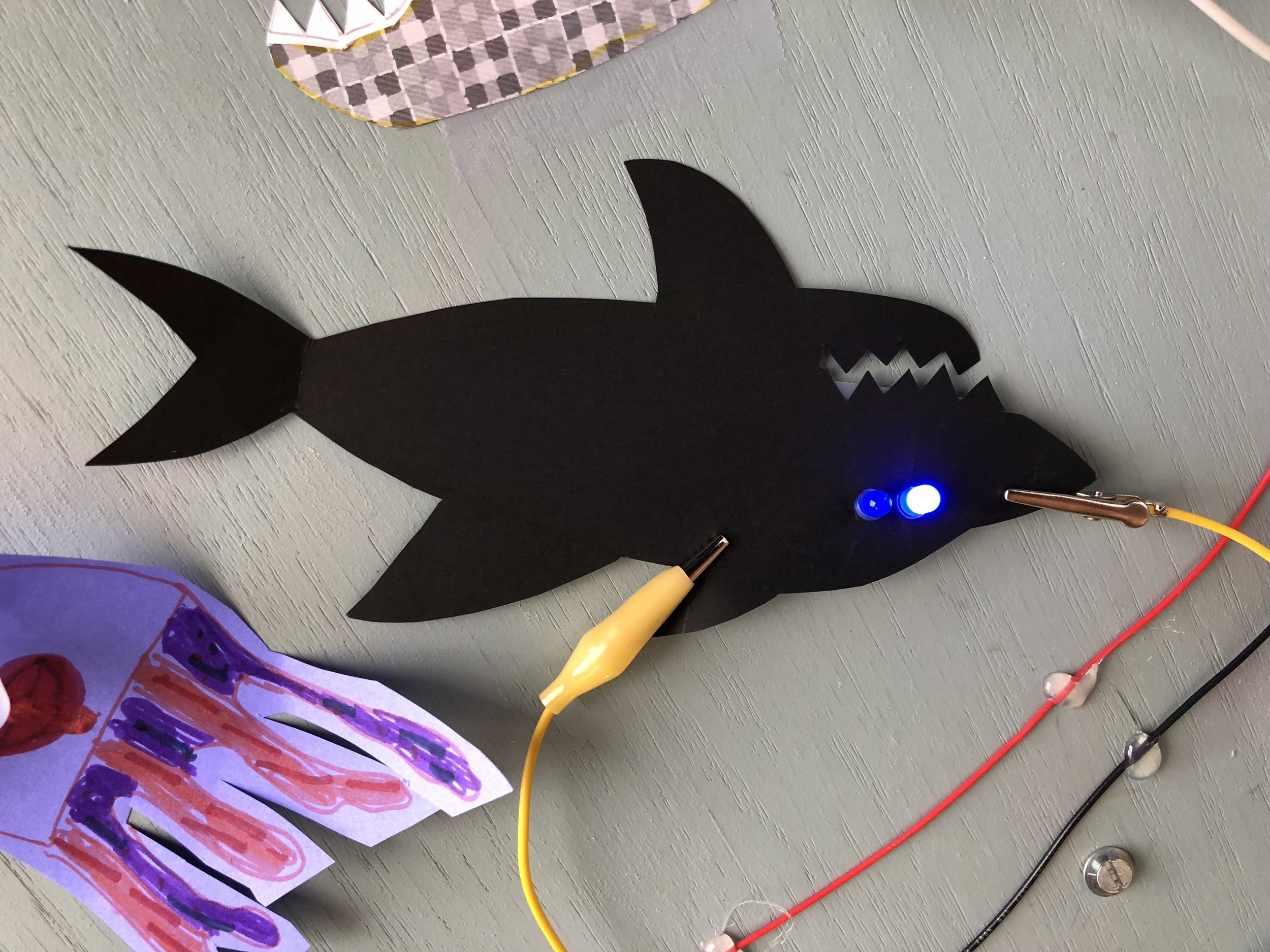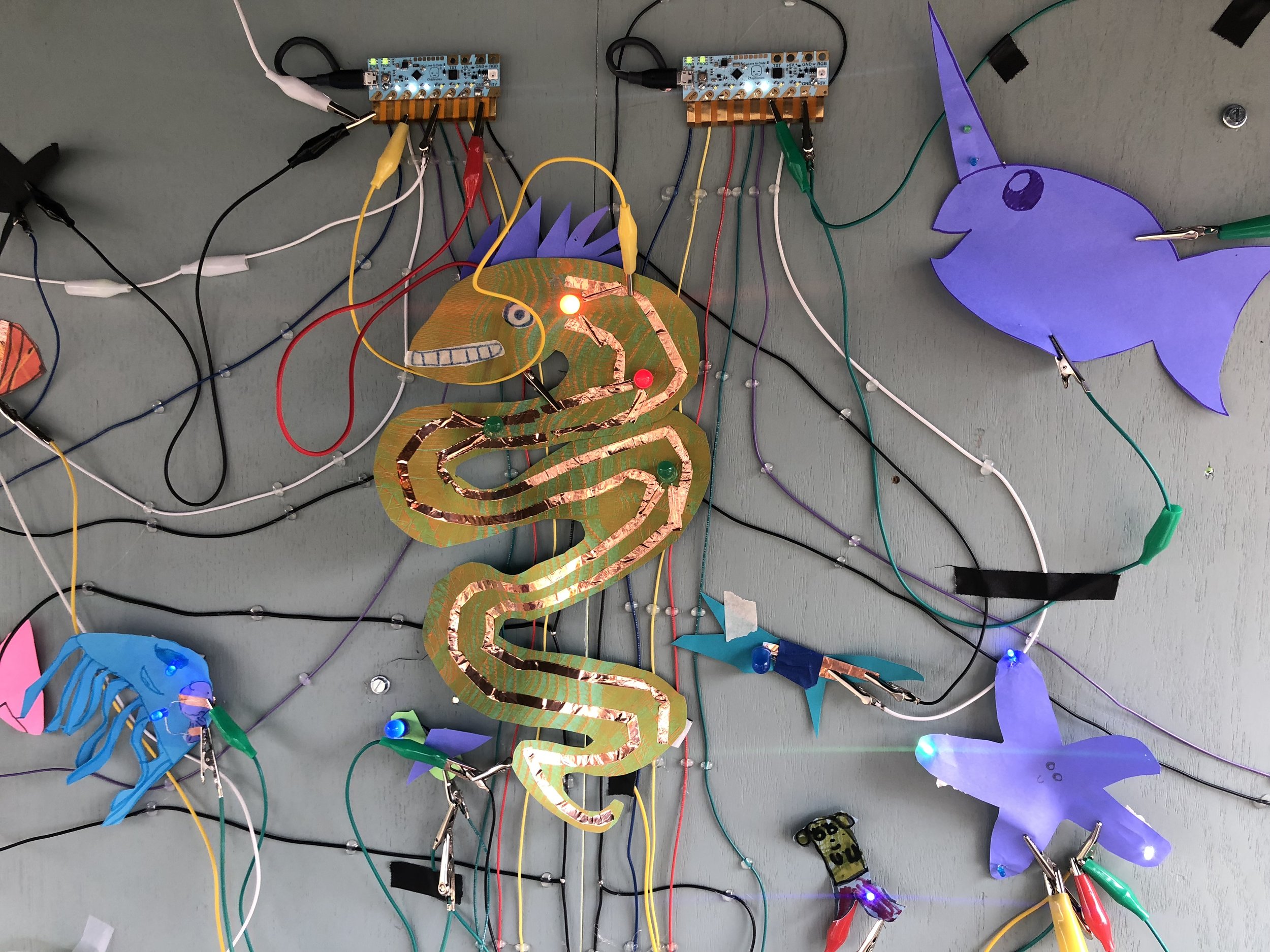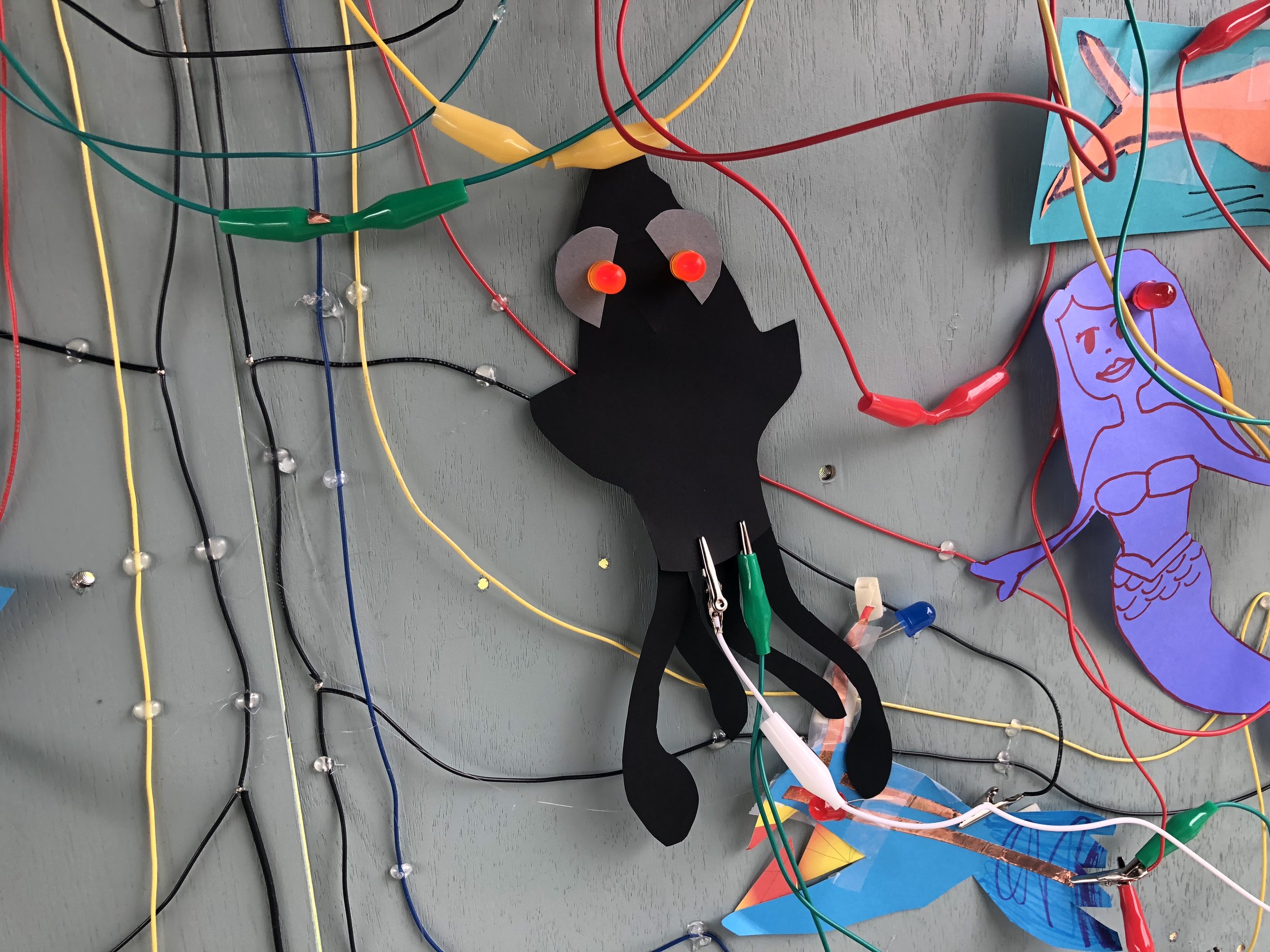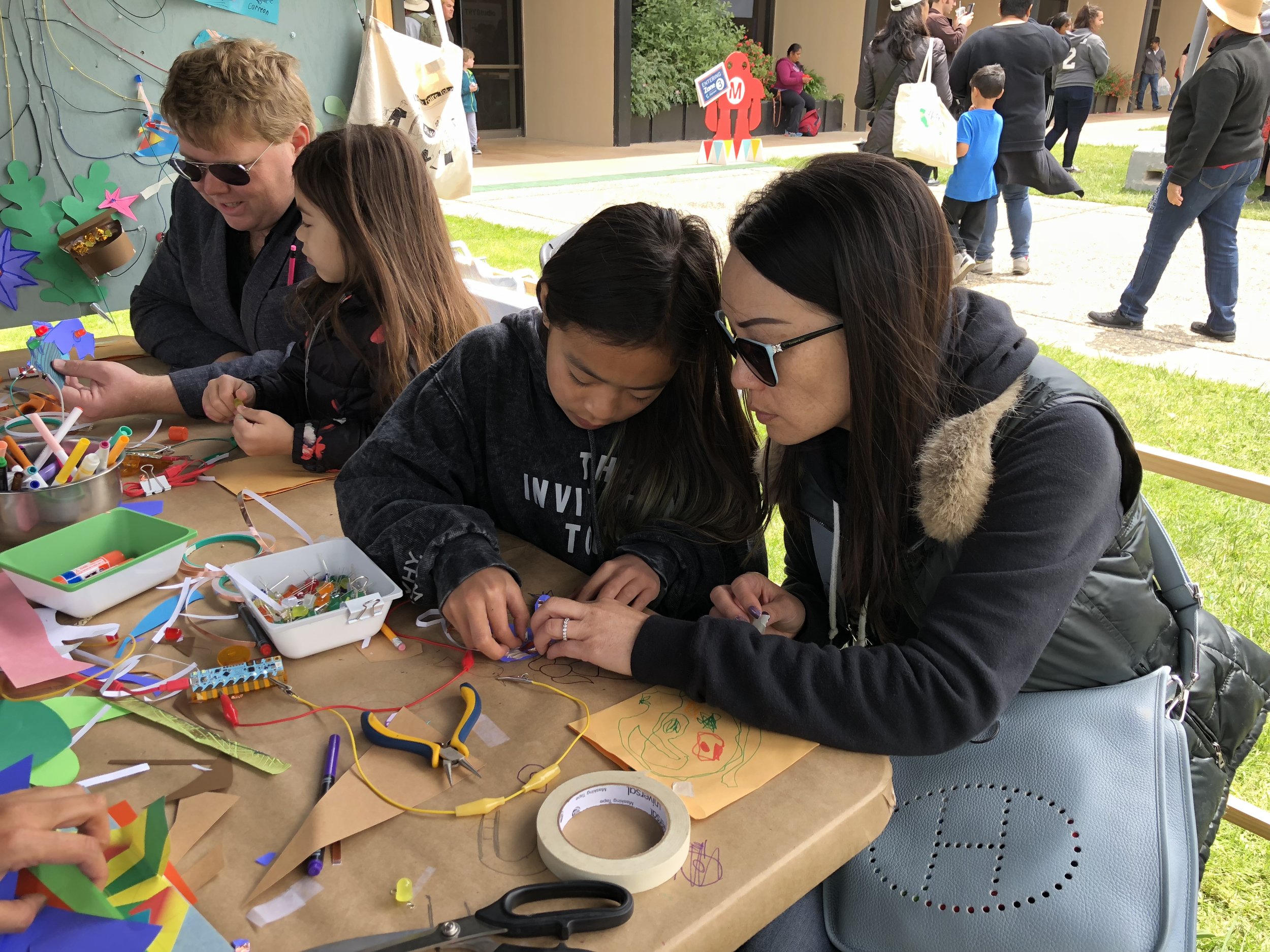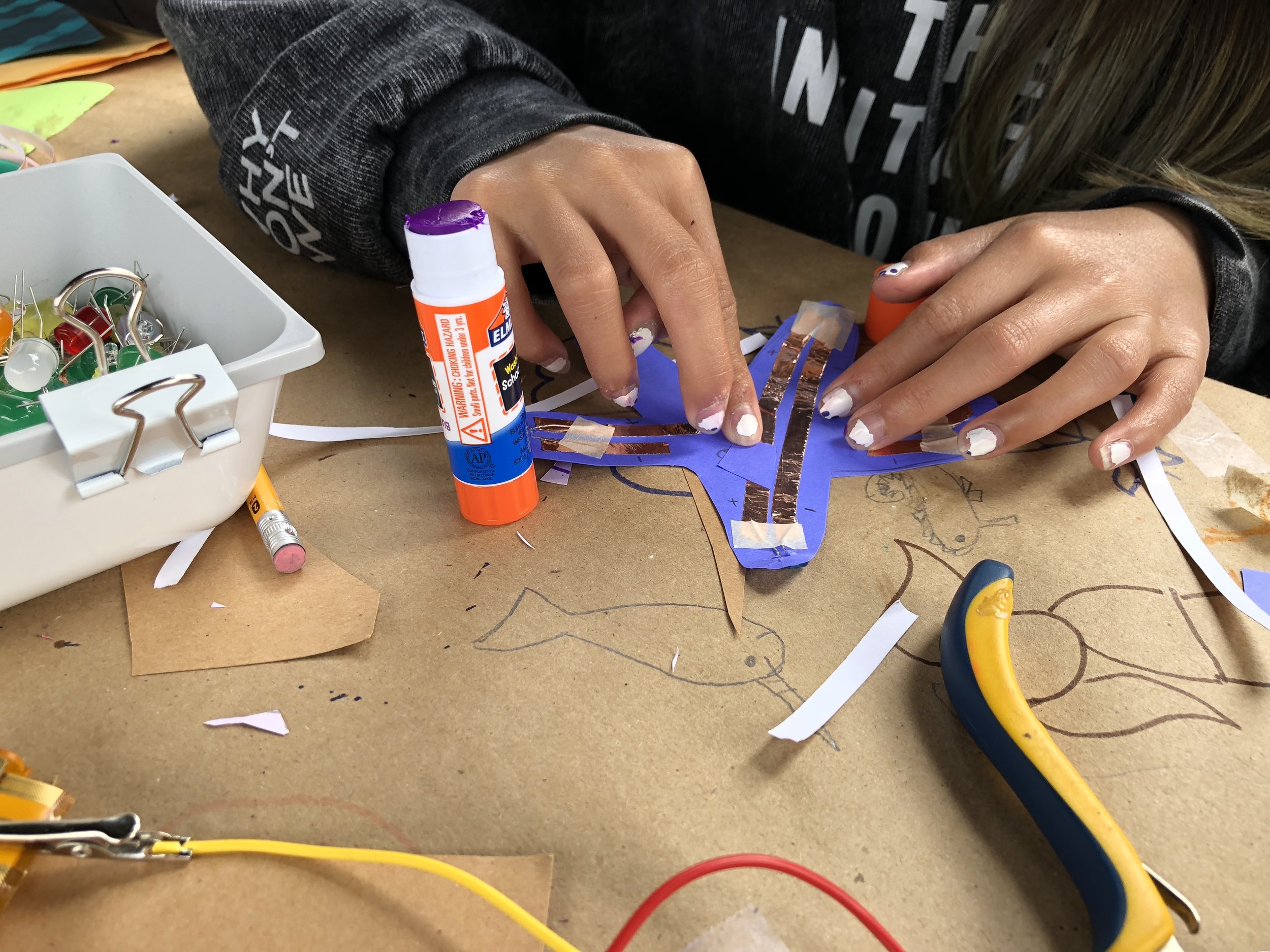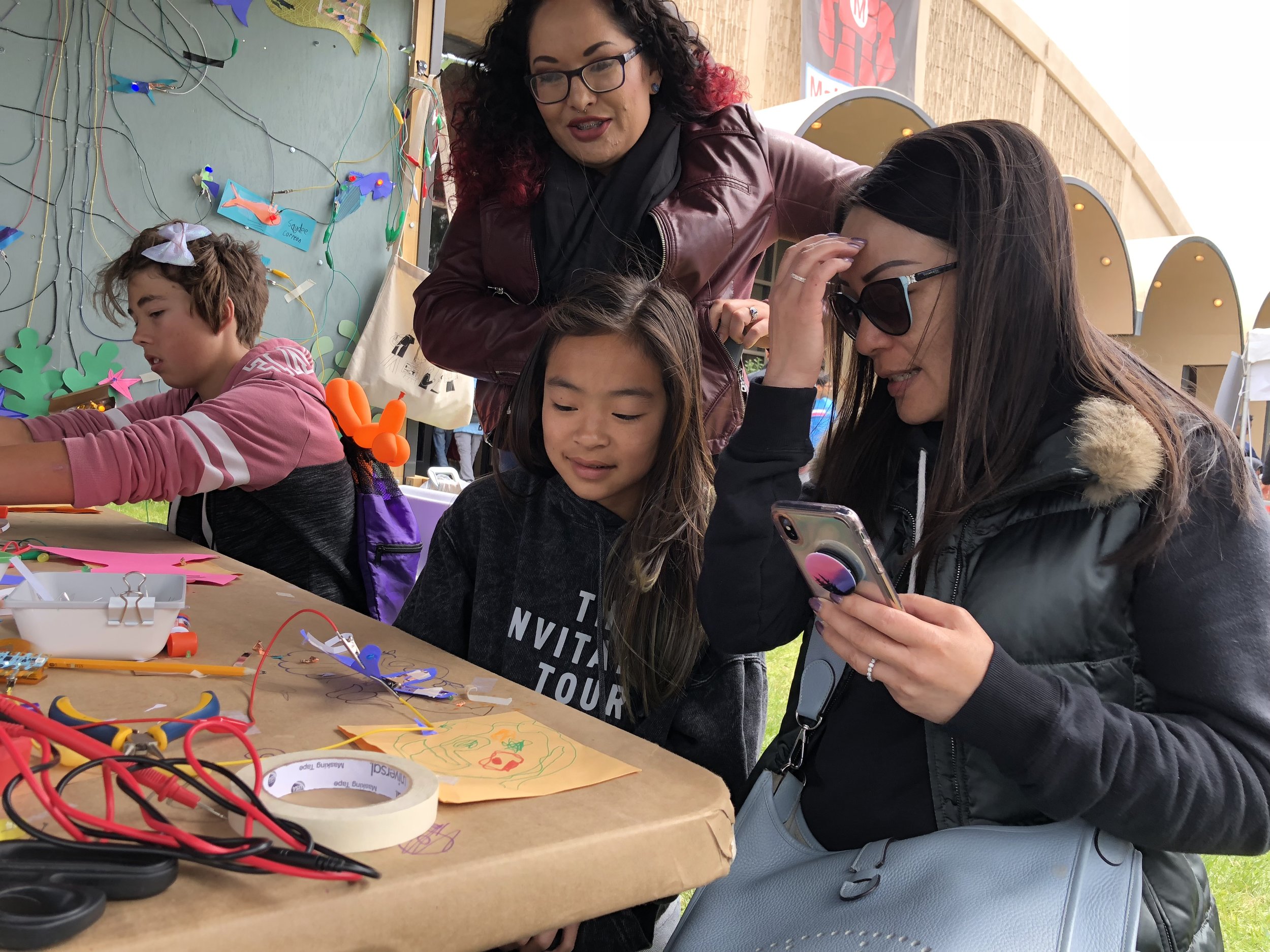Computational Paper Circuits at Bay Area Maker Faire
Over the past month we've been experimenting with computational tinkering, which we loosely define as exploring digital tools and programming with an open-ended, collaborative and playful spirit. During April PD workshops in Barcelona, Lagos, Bentonville and Little Rock, we introduced an activity that combined paper circuitry with programing the chibitronics #chibichip which is a friendly microprocessor in the shape of a binder clip. At Bay Area Maker Faire this year, we tried two different takes on using the same materials and topics in experimental ways.
On Friday before the event, I led a educator workshop with collaborators David Cole and Liz Sylvan from Nexmap and Jie Qi from Chibitronics. We've been working with this group for the past couple months to develop some starting point templates for paper circuits and data mapping and this workshop was the first chance to try out ideas with new learners.
As in previous paper circuit and computation activities we had people work in pairs and showed a variety of examples that represented a range of possibilities. This was important to help participants feel more comfortable with these complex topics. In this workshop we introduced a couple of the templates that we designed to introduce basic circuits, sample programs and initial designs.
We suggested a theme for the project as representing data or a story on a map. Some of the possible overlays included garden, a school, a city, maker faire grounds or the entire United States. After a quick introduction, pairs spent about an hour making some really interesting designs, I especially liked a project that was inspired by K-Fai Steele's drawings in the love to code book and Nicole's watercolor painting of her garden.
Thanks to the generousity of Chibitronics, participants also got the chance to take home the love to code kit and book which hopefully will encourage them to continue exploring these ideas after the session.
This workshop gave us some good insight on low thresholds for the complicated topics of circuitry, programming and data visualization. I think it's nessecary to consider the progression of templates while still giving participants the chance to "color outside the lines" at points. As well we hope to think more about how to create pathways to more detailed mapping techniques, connected data and live streams of information.
For our Maker Faire booth, we continued working with some of the same tools (paper circuitry and chibichips) to push the collaborative element of the workshop further. As well, we wanted to create a immersive environment to build more engagement in the activity of building a underwater circuitry installation. Before the event, we set up four boards with a pre-programmed chibichips with hard soldered alligator clips in many places across the backdrop. Nicole also joined in the fun by cutting paper sea plants and using the scroll saw to cut out wooden rocks and kelp.
We seeded the work table with chibichips running the same multithreading program and when people joined in the activity, we encouraged them to create their own sea creature paper circuit design to add to the installation. They could then experiment with connecting the project to the chibichip to see different possible patterns for the lights. When they finished we attached their creation to the wall with tape and hooked it to the alligator clips.
I loved the wide variety of ideas people had about what to make that included mermaids, angler fish, jellies, submarines and countless other variations on the underwater theme. Participants drew out their patterns and used collage techniques to create patterns for their animals and contraptions.
We encouraged learners to experiment with different ways of incorporating a circuit to the design. Some used the copper tape as part of the aesthetic design and others made multiple layers to hide the guts of the project under the paper.
Since Maker Faire is a busy environment for a drop in workshop, we did many things to lower the threshold for the interaction like pre-programming the chips, creating simple one LED examples and adding aligator cips to easily change the connection points. But some people spent a long time working on more intricate designs or more complex circuity.
One great interaction I had as a faciliator was with a pair who were working together to create a starfish with LEDs on the ends of each leg. In the process of setting up their circuit, they explored positive/negative legs of the LED, build bridges with paper to avoid short circuits and use a multimeter to test the design. As well, I could tell how much iteration and perserverance was required to made the project work as they were both really pround when all the lights finally blinked together.
Over the course of the workshop, the backdrop got so crowded and we just kept adding more creations on in a parrellel circuit by clipping it to another paper creation. This worked ok but was a little problematic because the colors of the lights sometimes weren't compatible and with the craziness of the wall, it was tricky to figure out what was connected to what. For the next design of these walls, I think we'll have to think more carefully about how to attach more than one creation to each pin.
At the end of each day the undersea world was teaming with fading, blinking and pulsing life. It was even more crazy and beautiful that we could have anticipated before the event and I loved how each piece of the installation reflected the personalized ideas of the makers. Hopefully this will be a good first step that will encourage participants to continue exploring circuits and programming.
Maker Faire is always a exhilarating, exhausting and inspiring event and this year was no execption. It was great to share some of our latest prototypes around computational tinkering at the educator workshop as well as the kids and adults who stopped by our drop in space. We're looking forward to continuing to explore pushing the possibilities for collaboration and creating connections to the high ceilings of data mapping for paper circuit workshops.



